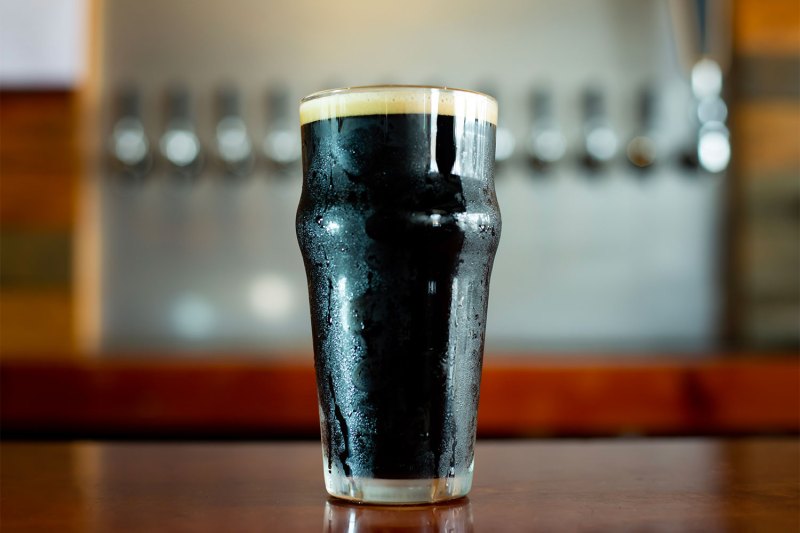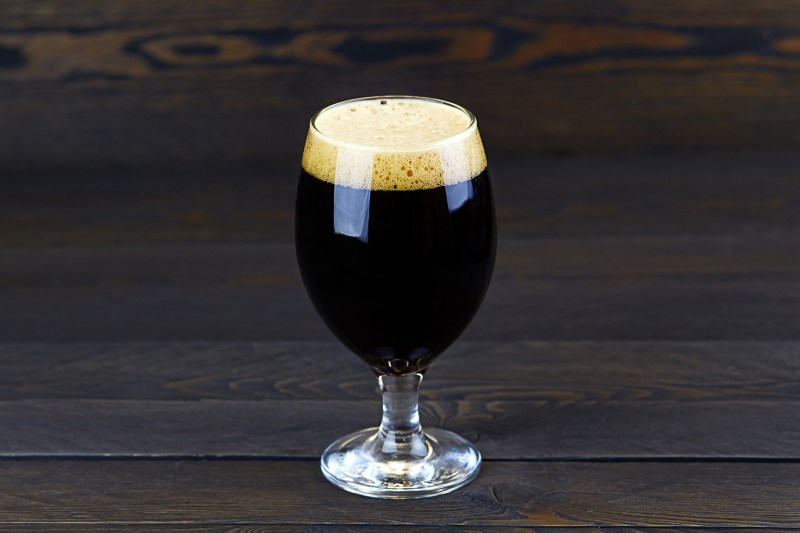Stout is synonymous with dark-toned goodness in a pint glass. The supremely malty beer style is one of the best known beers and loved in the world, and for good reason. In fact, during its heyday a couple of centuries ago — prior to better medical judgement prevailing — the best stout beer was believed to have curative and strengthening properties. This was the go-to beer for athletes training for the Olympics or looking to plug some calories back in, post-soccer match. And while it may not actually have medicinal properties, stout is a remarkable beer.
Now, while there are a whole host of stouts including milk stouts and even oyster stouts, there are really only two kinds you need to familiarize yourself with: Standard grade and imperial. We’ll save the milk stouts, oyster stouts, oat stouts, and chocolate stouts for another story.
Related Reading
Standard Grade: Stout Beer

The stout we know and love today was concocted in the U.K. in the 1800s. It came about essentially as the big brother of porter, an immensely popular beer of the era. Producers began working with darker malts, thereby producing darker beers with quintessential roasted flavors. The equivalent to today’s stout was brewed as long ago as the late 17th century; however it was called a porter stout for quite some time. The stout attachment mainly just suggested a bigger, stronger beer.
These were relatively cheap beers (both to make and purchase) that did not turn as quickly as other styles, an important quality early on. The popularity could be owed to a variety of things. Obviously, the cooler weather of the U.K. welcomed heftier beers. They also paired nicely with local cuisine, such as shellfish or fish and chips. And for a spell, medical professionals in Europe even recommended them for everything from inspiring better digestion to improving the milk of breastfeeding mothers.
Standard stouts are always quite dark, ranging from deep brown to jet black in hue. The top-fermented beers tend to bring some excellent bittersweet flavors to the table, ranging from baking chocolate, anise, espresso, and molasses. The roasted malt and barley are the key ingredients here, affording inky color and rustic flavors. Despite these robust flavors, the beer still comes off as clean and dry, and often quite refreshing. And many are hit with just enough hops to offer some balance by way of subtle bitterness.
Its Imperial Cousin: Imperial Stout Beer

About the time stouts were taking off, trade with Russia was, too. As beer writer Jeff Alworth writes in his fantastic book The Beer Bible, a legend suggests that even stronger versions of stout were made in order to withstand the boat trip to St. Petersburg. Yet, with chilly weather the norm (and ideal for shipping perishables), a stronger beer was really likely brewed to adhere to the taste of the Russians. The royals there, along with the public, simply wanted something to take the edge off those brutal inclement-weather months.
Today, the Russian name has been mostly dropped in favor of, simply, the imperial stout. But the imperial name is fitting, as the higher-ups in Russia were known to really enjoy the stuff. Essentially, this is a higher octane beer, often several ticks higher on the ABV spectrum. It tends to be richer and a little more viscous, often taking on some qualities from time spent in the barrel. Alworth calls the imperial stout the true “king of beers.”
A great example is Old Rasputin by North Coast Brewing. A heady sipper, this beer should be poured into a glass and enjoyed over an unhurried spell, preferably before a crackling fire or during an episode of The Great British Baking Show. Much like the imperial IPA is the mightier version of the IPA, so too is the imperial stout compared to its namesake standard version.


